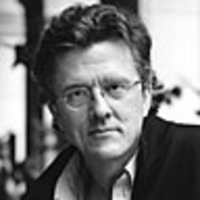
All five of these books (except Mailer's) were written when their authors were in their mid-30s—old enough to write masterfully and have some grown-up distance on what was going on, but still just young enough to viscerally feel what was happening in real time. I read each one between the ages of 14 and 24.
The Electric Kool-Aid Acid Test (1968)
By Tom Wolfe

I checked out this book from the Omaha Public Library in 1969, the summer of Woodstock, just after I'd first smoked marijuana for the first time, before I turned 15. It doubly or triply astounded and thrilled me. It's a you-are-there account of Ken Kesey and his Merry Pranksters' transcontinental trip on a bus they called Further, and the spawning of the counterculture in San Francisco right afterward. It's thick with crazed gusto, but also has a precision and irony that almost no one else brought to the ’60s. More than any other single book it made me want to be a writer. I was a little apprehensive to re-read it as an adult, but like all of Wolfe's early journalism, it totally holds up.
Slouching Towards Bethlehem (1968)
By Joan Didion

At age 33, Didion was astonishingly clear-eyed about the discombobulated culture going on around her. Everything was in flux, it seemed, except her unflinching, even-keeled powers of observation and moral analysis. So much written then seems so dated today. But not these essays:
“One of the mixed blessings of being 20 and 21 and even 23 is the conviction that nothing like this, all evidence to the contrary notwithstanding, has ever happened before.”
"[W]hen we start deceiving ourselves into thinking not that we want something or need something, not that it is a pragmatic necessity for us to have it, but that it is a moral imperative that we have it, then is when we join the fashionable madmen, and then is when the thin whine of hysteria is heard in the land, and then is when we are in bad trouble. And I suspect we are already there.”
The Armies of the Night: History as a Novel, the Novel as History (1968)
By Norman Mailer

This is nominally a book of reportage about the huge and unprecedented antiwar march on the Pentagon one weekend in the fall of 1967. Yet despite its pretention—the subtitle, the third-person references to the author as "Mailer"—there is no better nonfiction portrayal of America at its 20th-century moment of unraveling. He sees and dissects the cultural and political transmutation suddenly underway even as (unlike Wolfe or Didion) he embodies it.
Fear and Loathing in Las Vegas (1972)
By Hunter S. Thompson

When I was 17, two years after Tom Wolfe had rewired my sensibility, Hunter Thompson provided a tune-up with his magical-realist chronicle of a journalistic expedition to Las Vegas to a) report on a National District Attorneys Association conference on drugs, and b) consume huge quantities of drugs (LSD, mescaline, cocaine, ether, etc.). Thompson went all in, and then further still. If Mailer embodied a certain Northeastern middle-aged male variant of the ’60s, Thompson was its iconic Western cowboy iteration. An inscribed copy of the book (like my copy of Catch-22, signed by Joseph Heller) is one of my treasures.
Americana (1971)
By Don DeLillo

I read DeLillo's first book some years after it came out and some years before he'd become a literary household name. Like the novel's protagonist, David Bell, I was in my 20s and working in the midtown Manhattan media business. The book is set in the '60s, when Bell quits his job and—in perfect ’60s fashion—lights out for the territories to try to figure out himself and America. It is very much a DeLillo novel, except shaggier, less solemn, more youthful, fun, and funnier.






